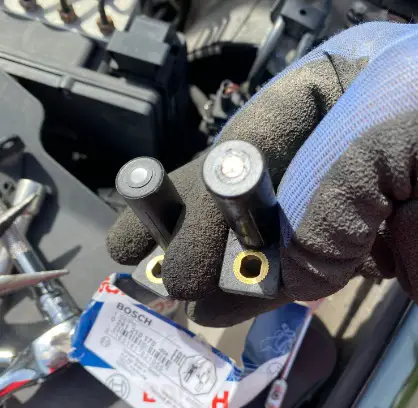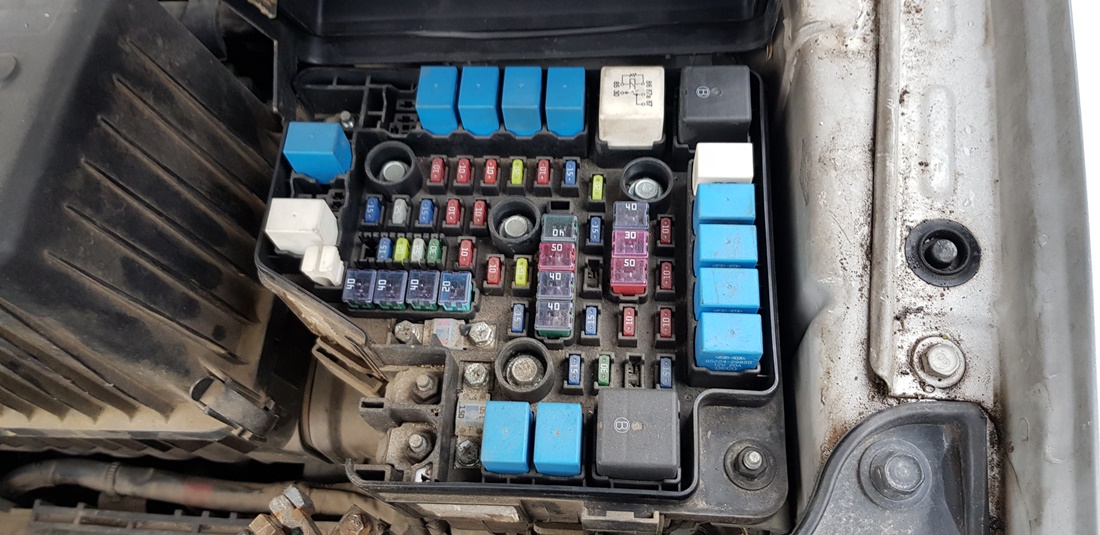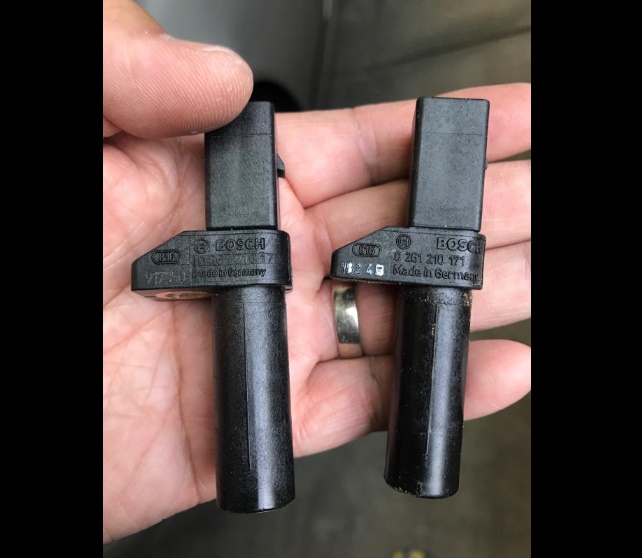My tire recently blew out while I was driving on the highway. I pulled to the side and changed it with a spare tire. However, as I was driving, I wasn’t seeing any repair shops.
So, I was wondering how long can you drive on a spare tire. Is there a speed and length limit on how much you can drive with a spare tire?
Eager to find out, I pulled to the side of the road and started my research. Here is what I found out:
- Key Takeaway
- How Long Can You Drive on a Spare Tire?
- Types of Spare Tires and How Long You Can Drive on Each
- Is it Safe to Drive on a Spare Tire?
- What Happens If You Drive on a Spare Tire Too Long?
- Can I Reuse a Spare Tire?
- Can You Leave a Spare Tire on Overnight?
- How Fast Can You Go on a Spare Tire?
- Is it Better to Have a Spare Tire on the Front or Back?
- FAQs
- Q: What are the different types of spare tires?
- Q: How long can I drive on a full-size spare tire?
- Q: How long can I drive on a donut spare tire?
- Q: How long can I drive on a run-flat tire?
- Q: Can I drive on a spare tire for an extended period of time?
- Q: What should I do if I have to use a spare tire?
- Q: How often should I inspect my spare tire?
- Q: Can I use a donut spare tire instead of a full-size spare?
- Q: What are some general tips for tire care and maintenance?
- In Conclusion
Key Takeaway
- You should not drive over 50 mph and no more than 50-70 miles with a donut-type spare tire, while full-sized spare tires can typically last up to 100 miles.
- There are three main types of spare tires: full-size matching, full-size non-matching (which may differ in brand, model, or type but has similar specifications to your regular tires), and compact temporary or “donut” spares, which are smaller and not intended for long-term use.
How Long Can You Drive on a Spare Tire?

You should not drive over 50 mph and no more than 50-70 miles with a donut-type spare tire. Full-sized spare tires can typically last up to 100 miles.
These are just estimates, as actual mileage can vary based on the specific type of spare tire and driving conditions.
It’s recommended to replace the spare with a new tire as soon as possible to avoid potential damage.
Types of Spare Tires and How Long You Can Drive on Each
While the above describes spare tires in general, there are various types of spare tires used in today’s vehicles.
Full-Size Matching Spare Tire

This type of spare tire can actually be used just like a regular tire, so it can be driven at normal speeds and for the length of time you would expect the original tire to last.
A full-size matching spare tire is most often found in trucks and SUVs. They obviously provide the advantage of a spare tire that functions as an actual replacement tire. However, the downside is the added weight and space taken up to store this tire.
An important caveat is that these tires are replacements for the original tires installed on the vehicle from the factory.
If you have replaced tires and are not running the original specifications from the factory (for example, maybe you have modified the vehicle and swapped out the wheels and tires, fitted larger tires, exchanged all-season tires for summer tires or vice versa, etc.), the spare tire could actually be a hindrance if used long-term.
If your vehicle has the same tires from the factory or if replaced, the same specifications and tread pattern as the original tires, the full-size matching spare tire can be used as a replacement tire.
You can have a shop mount the spare tire on the wheel that had the flat/damaged and use it normally.
If the tires are different from the factory setup, however, you will want to replace the full-size matching spare with a tire that matches the other three you have on your vehicle for optimal performance, safety, and efficiency.
Full-Size Non-Matching Spare Tire

A full-size non-matching spare tire does not match the other three tires, even if full-sized. It cannot be driven indefinitely and should be taken to the nearest repair shop rather than used as a substitute.
This is because mismatched tires can lead to issues like uneven wear. This can put a strain on your suspension, pull your car out of alignment, etc. It also impacts braking, which is both a wear and tear and a safety concern.
To avoid damaging components of your vehicle as well as reducing the overall safety of driving it, non-matched full-sized spare tires ought to be replaced with matching tires as soon as possible.
Full-Size Temporary Spare Tire

The full-size temporary spare tire should be driven just like a typical spare tire: Drive to the nearest repair shop, drive cautiously, and do not drive fast.
The temporary designation of this tire indicates that it has less tread than a regular tire.
This reduces the longevity of the tire, and can also lead to problems on the road. For example, the tire will not perform as well on rough pavement as a tire with more tread.
This can make it harder to control the vehicle. This is why you should drive slowly while running a temporary spare and minimize the total distance traveled on it.
Compact Temporary Spare Tire

The compact temporary spare tire matches the idea of a spare tire that most often comes to mind. These types of tires should be driven a maximum of 50-70 miles. Ideally, you would not necessarily drive that far, either.
The compact temporary spare tire is smaller in diameter and overall width. It has reduced tread compared to the standard tires mounted on the vehicle.
Compact temporary spare tires save space and weight in the vehicle’s trunk. However, they are truly only intended for short trips to get another tire mounted on as soon as possible says AAA.
Folding Temporary Spare Tire

Like the majority of spare tires, the folding temporary spare tire should only be driven to the nearest repair shop to be replaced. Follow the general rule of thumb of 50-70 miles.
A folding temporary spare tire is one that is not kept inflated. Before installing, you have to inflate the tire yourself.
This means you will also need to have a device to inflate the tire before using it.
This type of tire is also going to be more compact and save space. But, there is the added step of having to actually inflate it.
Is it Safe to Drive on a Spare Tire?
It is safe to drive short distances at reduced speed on a spare tire. However, it is not safe to replace your original tire with a spare tire that does not match the other three and drive as usual.
You should not substitute a full-sized tire with a spare tire for your everyday driving needs. This is because of chances of a blowout are increased and you are limited in the top speeds you can safely reach.
Also, using a spare tire extensively can damage the vehicle, including the suspension and transmission.
Even when full-sized (with the exception of full-sized matching spares, which essentially function as the 5th tire for your vehicle), the tire will have reduced tread. Other spares are smaller and pose their own hazards.
The danger of spare tires comes with ignoring recommendations on top speeds and driving distances.
Your vehicle owner’s manual should have details about the spare included. Also, information can also be found on the spare tire itself.
If your spare tire has a warning that speeds should not exceed 50 miles per hour, do not go over said speed.
The warning is there because the spare tire is under increased load relative to the other tires and is more likely to blow out.
Additionally, the spare tire will result in a poorer handling experience; it will be harder to control the vehicle on a spare, so driving more slowly will help mitigate this problem.
The reduced tread poses a hazard both in terms of how long the tire will last and overall handling.
Tread depth and patterns are important, they help your vehicle traverse surfaces easily, whip away rainwater, etc.
What Happens If You Drive on a Spare Tire Too Long?
If you drive on a spare tire for too long, it can cause significant damage to your vehicle. Driving on a spare tire for an extended period can harm other parts of your vehicle, such as the brakes.
Additionally, Driving Press warns that driving too long on a spare tire can lead to bursts or damage to engine equipment, including the transmission.
Note that spare tires often have a different circumference, which can damage a differential with prolonged use.
Furthermore, if there is far more tread on the spare, you may notice decreased control and comfort while driving, as reported by Les Schwab.
Therefore, it’s recommended to replace a spare tire as soon as possible to avoid potential damage.
Can I Reuse a Spare Tire?
Yes, as long as it has not already been used for long distances or improperly. For example, if you had a flat, threw the spare on, and drove it 5 miles to get replaced, you can reuse it. If, on the other hand, you had to drive 50 miles before getting it replaced, you are better off not reusing the spare.
Also, be sure to inspect the spare tire prior to reuse. If the tread is worn, do not reuse it. Be sure it is still inflated properly before reusing it as well.
Can You Leave a Spare Tire on Overnight?
Yes, a spare tire can be left on a vehicle overnight. This short period of time is not enough to cause damage to the car’s suspension or the tire itself while it sits idle. If you cannot get to a repair shop and need to park the car but already installed the spare tire, rest assured that it will be perfectly fine to let it sit until the next day.
Be sure to take into consideration the context, however! If the car is on the side of a highway, make sure the vehicle is parked off the road.
If you have safety cones, set them out to help alert other drivers that your car is parked there.
How Fast Can You Go on a Spare Tire?
50 miles per hour is the maximum speed you should drive when on a spare tire. Please note that simply because the tire’s sidewall has a warning stating not to exceed 50 miles per hour. This does not mean it is a good idea to maintain a speed of 50 miles per hour!
For example, if you are traveling along a road full of potholes and other uneven surfaces, it is much better to drive more slowly than you would without a spare tire (if you would normally go 30, for example, consider going down to 25, 20, or even slower).
The goal of a spare tire is to safely transport your vehicle to get repaired. There is no reason to push the limits of the spare tire, and doing so is unlikely to be an enjoyable process, as the vehicle’s handling is negatively impacted by the spare tire.
Instead, go slowly, try to keep the car straight, and get to your destination without problems.
Is it Better to Have a Spare Tire on the Front or Back?
It is better to have a spare tire on the back of a vehicle than the front. The reason for this is that the front of the vehicle usually weighs more (with the exception of the rare rear-engine vehicles, most engines are located in the front) than the back, meaning a spare tire will be put under even more strain if placed in the front than the back.
It also reduces your braking effectiveness because most braking work is done in the front.
This means that if you have a flat in the front, the ideal course of action would be to take one of your rear wheels off and put it on the front and put the spare tire in the rear.
Many vehicles have identical tires all around, making this an easy fix. It is no different than rotating the tires, essentially.
If you are not able to put a spare tire in the rear and have to use the front, be sure to maintain caution and only drive very short distances.
If you can get to the repair shop in a mile, it is likely to be fine to use the spare in the front.
However, If you have to travel much further, it becomes even riskier. The spare is going to be strained and your handling with be worse than it would be if the spare were in the rear.
FAQs
Q: What are the different types of spare tires?
A: There are three main types of spare tires: full-size spare, donut spare, and run-flat tire.
Q: How long can I drive on a full-size spare tire?
A: A full-size spare tire can be driven just like a regular tire, so there is no mileage limit.
Q: How long can I drive on a donut spare tire?
A: A donut spare tire is designed for temporary use only. It is recommended to drive on it for no more than 50 miles and under 50 miles per hour.
Q: How long can I drive on a run-flat tire?
A: Run-flat tires are designed to be driven for a limited distance at a reduced speed, usually up to 70 miles. However, it is always best to consult the manufacturer’s guidelines.
Q: Can I drive on a spare tire for an extended period of time?
A: It is not recommended to drive on a spare tire for an extended period of time. Spare tires are not intended for long-term use and may have less traction and stability compared to regular tires.
Q: What should I do if I have to use a spare tire?
A: If you have to drive on a spare tire, it is important to drive safely and avoid high speeds. You should also have the regular tire repaired or replaced as soon as possible.
Q: How often should I inspect my spare tire?
A: It is a good idea to inspect your spare tire regularly, along with your other tires. Check for proper tire pressure, any signs of damage, and tread depth.
Q: Can I use a donut spare tire instead of a full-size spare?
A: While you can use a donut spare tire as a temporary solution, it is recommended to replace it with a full-size spare tire as soon as possible. Donut spare tires have limited capabilities and may not provide optimal traction or stability.
Q: What are some general tips for tire care and maintenance?
A: Some general tips for tire care include maintaining proper tire pressure, regularly inspecting for damage or wear, and rotating the tires for balanced wear. Additionally, storing tires properly and driving cautiously can help prolong their lifespan.
In Conclusion
With the exception of full-sized matching spare tires, it is advised to replace a spare tire as soon as possible. Make sure to limit speeds (not over 50 miles per hour), and distances driven (up to 50-70 miles generally).
It is not safe to use a spare tire as a long-term replacement. However, it is safe to carefully drive on one to get to a repair shop.




